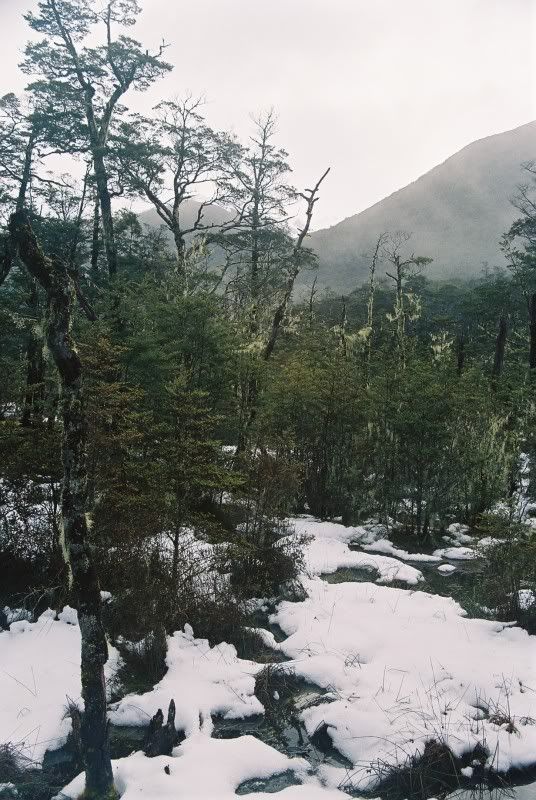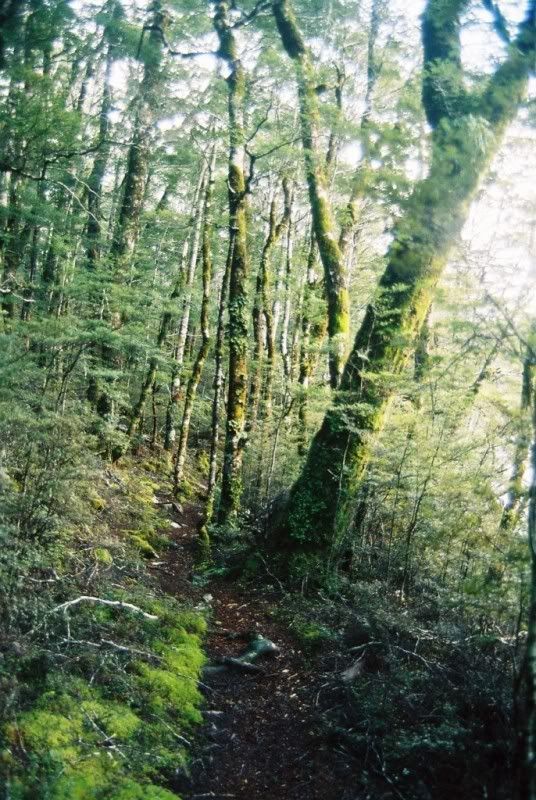|
|
Post by nikkortorokkor on Jul 3, 2007 23:49:29 GMT -5
It's not Summer downunder in New Zealand! These images were made on June 30 in the Nina Valley in New Zealand's Southern Alps. The occasion was a Rangiora Tramping Club weekend tramp (hike for you non-kiwis) to the Nina Hut. The pictures were made with a Minolta XG-9 and Phenix 3.4-4.8/28-70 zoom. Not exactly crisp from edge to edge! I make no claims for the artistic merits of the pictures, they're just snapshots for the club magazine. It may be of interest that they were made on AE, with no compensation for the snow - nice work Minolta.   I thought that this one might underexpose as I didn't compensate for the snow.  |
|
Reiska
Lifetime Member
   Member has Passed
Member has Passed
Posts: 558
|
Post by Reiska on Jul 4, 2007 2:47:40 GMT -5
Nice weather for tramping in a fresh, cool and easy to respire air. You don't have kiwis for packed lunch either? We use to have those here for refreshment  (Perhaps I didn't understand what you meant.) I see "Spanish moss" hanging on the branches. It indicates pure air and no pollution. Usheaceae species are extremely sensitive to dirtiness. Minolta's AE works well with the difficult situation, snow and dark forest. Of course there is a role for a film too. Regards Reijo |
|
|
|
Post by nikkortorokkor on Jul 4, 2007 3:30:53 GMT -5
heh-heh, I forgot about that confusion.
The New Zealand Dictionary gives 14 different meanings for the Maori word Kiwi, but the original noun refers to a flightless bird indigenous to New Zealand that has become our one of our 2 most recognizable national emblems (the other is the silver fern).
Kiwi is also used as shorthand for New Zealanders, and is used by us to refer to ourselves just as our neighbours refer to themselves as Aussies.
The third, rather unfortunate noun results from a shortening of 'Kiwifruit', a variety of Chinese Gooseberry that was 'rebranded' in the 1980s by the Kiwifruit Marketing Board. It was an export success for New Zealand, but Americans insisted on shortening it to just 'Kiwi'. So there you have it, once we were named after a shy nocturnal grub eating bird that can't fly; now we're just a bunch of fruits. Dunno which is worse!
But I digress.
the film was plain old Kodak '200 35mm colour print film', processed with no adjustments.
Is 'Spanish Moss' really a Lichen? If so, then yes, it's Spanish Moss hanging from the Mountain beech (Nothof*gus solandri). The Lichen and moss in this forest are amazingly rich in colour - I plan to go back for a few days with a tripod.
Oh, and the air is VERY clean up there. Fantastic hard light for photography!
|
|
Reiska
Lifetime Member
   Member has Passed
Member has Passed
Posts: 558
|
Post by Reiska on Jul 4, 2007 5:20:41 GMT -5
Spanish Moss isn't a lichen although it looks like a beard moss which is common here in the Taiga area. A short and partly distorted truth about Taiga, so don't believe everything  : lauro.fi/myhome.htmI think that Spanish Moss, which is an ordinary plant grows only on the New Continents aka North - and South America. It is funny, that Americans want a shortening of something. As we all know even the dwarfs are bigger there. The only explanation is, that Kiwifruit is an immigrant ;D. |
|
|
|
Post by nikkortorokkor on Jul 4, 2007 16:17:10 GMT -5
Thanks for the link. Here is another image from the trip. This is probably mountain beech, but possibly the similar red beech (nothofagus fusca). The mosses and lichen are spectacular. Now the camera bit. This was made with a Seagull 1.4/50, hand held, wide open. As you can see, the fast speed of this lens is of no practical use, given how soft it is away from the centre @ f1.4. I would've been better off using the tripod at f8 or f11 (or using my MC ROKKOR PF 1.7/55 instead). In the future, If I use the XG-9 for forest detail shots, I will try underexposing by half a stop to a stop. I feel (dodgy glass notwithstanding) that this is a bit under saturated. The colours really were vibrant russets, greens and golds.  I like the way the chief censor won't allow me to write fagus without substituting the A with an *! |
|
Reiska
Lifetime Member
   Member has Passed
Member has Passed
Posts: 558
|
Post by Reiska on Jul 5, 2007 7:19:10 GMT -5
That Seagull really seems soft when wide open. Rather shallow DOF emphasizes the effect at f1.4.
Using f8 - f11 would be better like you mentioned. There might be also lens flare on the right upper corner.
I like the forest like that, near natural state.
|
|
|
|
Post by nikkortorokkor on Jul 5, 2007 16:31:26 GMT -5
I like the forest like that, near natural state. Introduced deer (mainly Red Deer in this region) really knocked the forest about. Intensive commercial hunting from the 1960s to 80s reduced the deer population dramatically, allowing the forest some breathing space to repair itself. Other introduced problems include the Australian Brush Tailed Possum and the German Wasp. Deer are also making a comeback. The path in this photo is an archetypal New Zealand 'Tramping Track' cut for recreation but with the minimum of benching or clearing. It is a tough call for the Gov't department responsible for administering this area. Rough tracks mean less trampers and less wear and tear, but if too many trampers use the track anyway, the rough track will need more maintenance than a wide, benched 'superhighway' track. In the Nina Valley the balance is about right, resulting in a 'natural' experience for trampers. Chinese glass tends to flare at the least provocation! Even though it was misty and drizzly on the day, I think you could be right about the flare! |
|
|
|
Post by minoltaman on Jul 6, 2007 12:01:47 GMT -5
Nikkortorokkor, that third shot in your first post is beautiful.
|
|